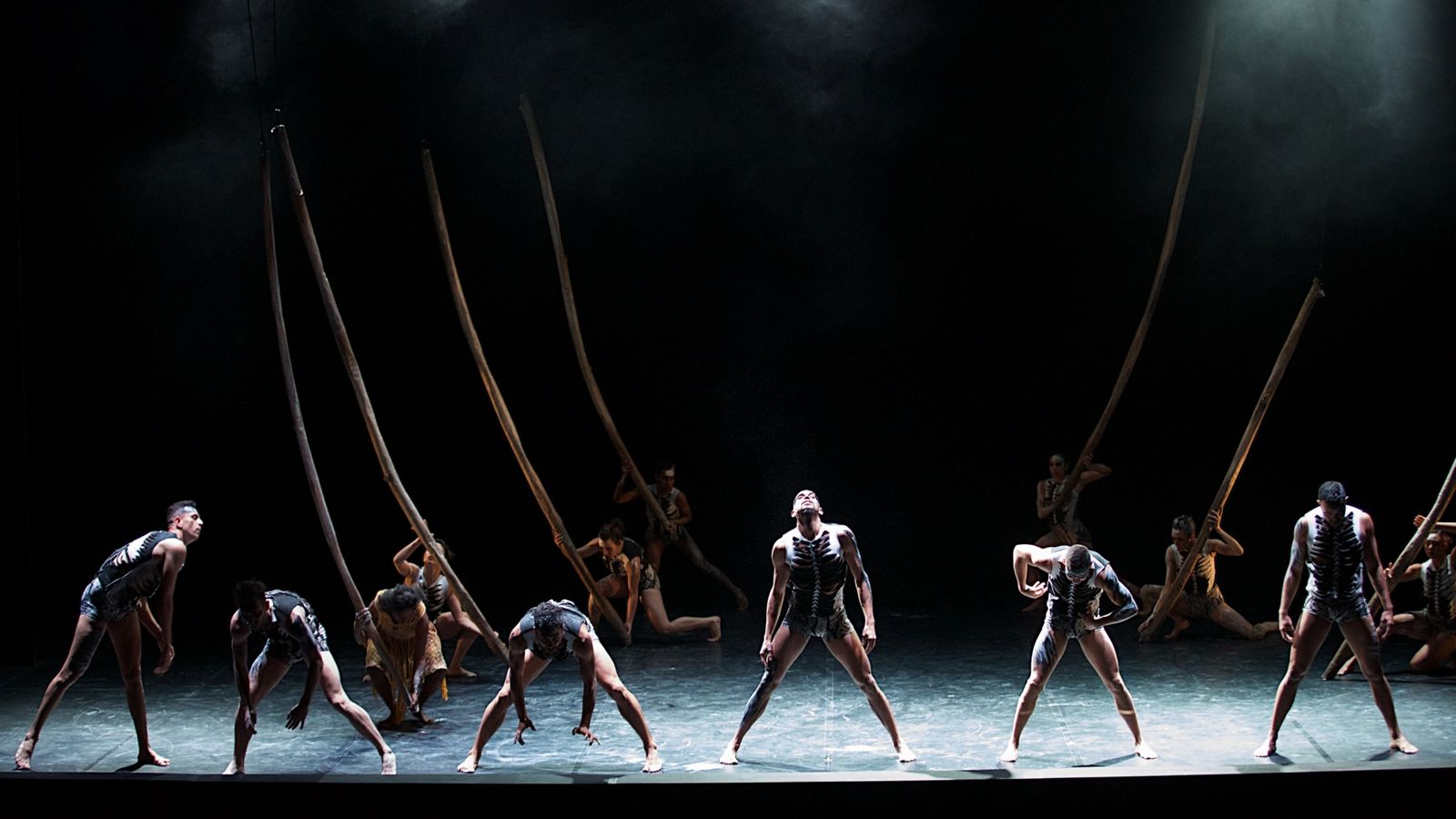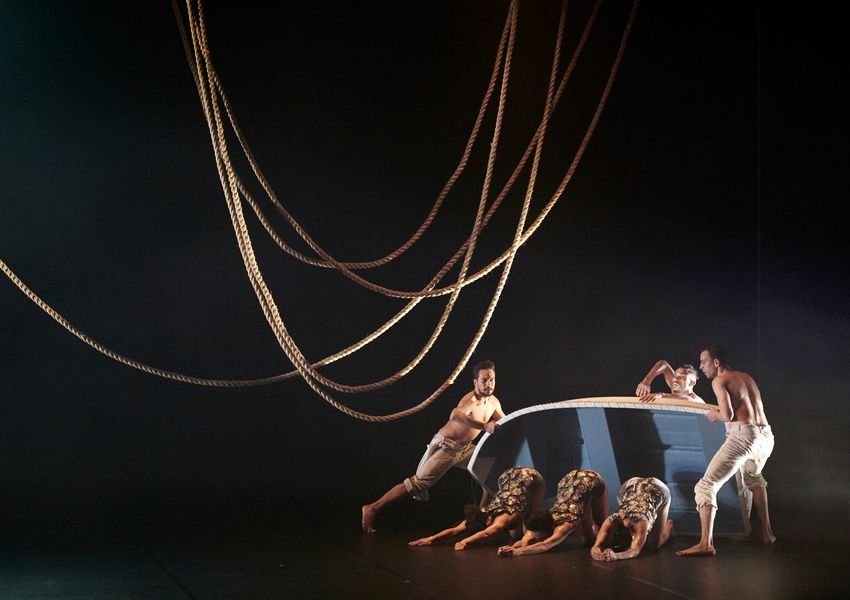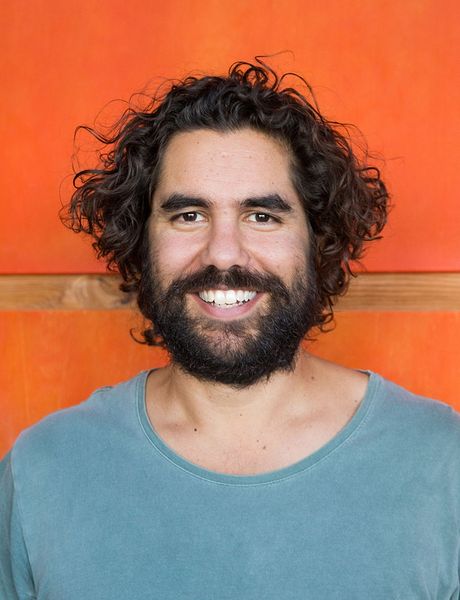
Visually, I have to find spirit within all these elements; I think when you find this spirit you also find an element of truth.
WHAT INSPIRES YOU?
Stories from this country, in particular, Aboriginal stories – we have such a long, rich history of 40,000 years of Aboriginal people living on this land and to be able to tell those stories in a contemporary form and celebrate the continuation of culture is what drives me.
WHAT DO YOU TRY AND INVOKE IN THE AUDIENCE THROUGH YOUR DESIGN?
I am the first and most critical audience member. I’m always responding to the story, the land, the people and culture. Visually, I have to find spirit within all these elements; I think when you find this spirit you also find an element of truth. That’s when the spirit of Bangarra’s work comes through for the audience and there is a raw, truthful connection, and that’s what I try and do, visually find these connect points.

HOW DO YOU BEGIN YOUR CREATIVE PROCESS?
The design process starts from listening to the choreographers’ ideas, or the story they want to tell. Then it’s my role to find visual representations of those ideas, finding the ingredients that create the visual language for the show.
Once we’ve found that, I can get my hands dirty to create what goes on stage. It could be cloth based, sculptural or painted, whatever is right for the story. Then you bring in others to help realise your design, from scenic artists to set builders to painters.

SHEOAK AND I.B.I.S ARE QUITE DIFFERENT IN MOOD AND TONE – HOW DO YOU BRING TOGETHER TWO DIFFERENT CREATIVE DIRECTIONS IN THE ONE PERFORMANCE?
Both are different in their flavour and texture, but hold strong messages about people, place, culture and spirit, so that’s what connects them. I like to keep them separate and that’s the great thing about working with three choreographers, each responds differently. Sheoak is a more conceptual, spirit-based piece, while I.B.I.S feels more grounded and celebratory.
Jacob Nash
Set Designer

-
Set Design
Jacob Nash
-
Set Design